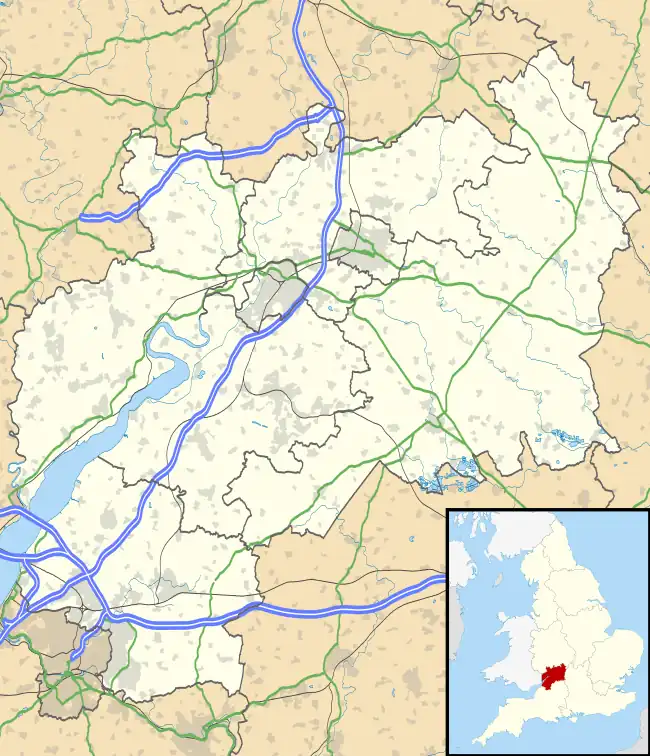| Church of St Eadburga | |
|---|---|
.jpg.webp) | |
 Church of St Eadburga | |
| 52°03′29″N 1°44′01″W / 52.0580°N 1.7335°W | |
| Denomination | Church of England |
| Website | www |
| Architecture | |
| Heritage designation | Grade I listed building |
| Designated | 25 August 1960 |
| Administration | |
| Province | Canterbury |
| Diocese | Gloucester |
| Benefice | Vale and Cotswold Edge |
The Anglican Church of St Eadburga at Ebrington in the Cotswold District of Gloucestershire, England was built in the 13th century. It is a grade I listed building.[1]
History
The church has a Norman nave. The aisle and chancel are from the 13th century. A Victorian restoration was carried out in 1875 and 1876.[1]
The parish is part of the Vale and Cotswold Edge benefice within the Diocese of Gloucester.[2]
Architecture
The stone building is supported by buttresses and has a limestone slate roof. It has a two-stage tower.[1]
It includes monuments to the Fortescue family including one to Sir John Fortescue in his robes as Lord Chief Justice.[3]
There is a 17th-century canopied pulpit and medieval stained glass windows, some of which is from the 16th and 17th centuries.[1] A wooden royal coat of arms dates from 1725.[4] The font is from the 13th century.[5]
The church contains a carved wooden board as a memorial to those from the village who died in World War II.[6]
References
- 1 2 3 4 "Church of St. Eadburga". National Heritage List for England. Historic England. Archived from the original on 4 March 2016. Retrieved 11 October 2020.
- ↑ "St Eadburgha's". A Church Near You. Church of England. Archived from the original on 11 October 2020. Retrieved 11 October 2020.
- ↑ "St. Eadburgha, Ebrington". Small Pilgrim Places Network. Archived from the original on 11 October 2020. Retrieved 11 October 2020.
- ↑ "Church Guide". Ebrington Church. Archived from the original on 10 September 2016. Retrieved 11 October 2020.
- ↑ "Ebrington - St Edburgha's Church". Cotswolds.com. Archived from the original on 6 April 2019. Retrieved 11 October 2020.
- ↑ "St Eadburgha Church WW2 Memorial". Imperial War Museum. Retrieved 11 October 2020.